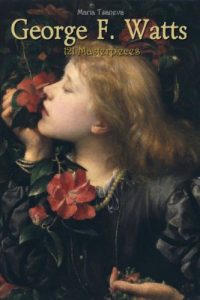This Art Book with Foreword and annotated reproductions by Maria Tsaneva contains 100 selected paintings and drawings of George Frederic Watts.
George Frederic Watts was a admired English Victorian artist related with the Symbolist movement. He became famous his allegorical works "Love and Life" and "Hope". These paintings were in which the emotions and aspirations of life would all be represented in a universal symbolic language. Watts was a hard-working artist who twice refused a baronetcy and other honors, including an offer to become president of the Royal Academy. His declared aims were clear: to paint pictures that appealed 'to the intellect and refined emotions rather than the senses': "I paint ideas, not things. I paint primarily because I have something to say, and since the gift of eloquent language has been denied to me, I use painting; my intention is not so much to paint pictures which shall please the eye, as to suggest great thoughts which shall speak to the imagination and to the heart and arouse all that is best and noblest in humanity."
Since the revival of interest in Victorian painting, Watts may be regaining the recognition and respect he enjoyed in the 19th century but he is not as well-known as contemporaries like Dante Gabriel Rossetti and Edward Burne-Jones.
George Frederic Watts was a admired English Victorian artist related with the Symbolist movement. He became famous his allegorical works "Love and Life" and "Hope". These paintings were in which the emotions and aspirations of life would all be represented in a universal symbolic language. Watts was a hard-working artist who twice refused a baronetcy and other honors, including an offer to become president of the Royal Academy. His declared aims were clear: to paint pictures that appealed 'to the intellect and refined emotions rather than the senses': "I paint ideas, not things. I paint primarily because I have something to say, and since the gift of eloquent language has been denied to me, I use painting; my intention is not so much to paint pictures which shall please the eye, as to suggest great thoughts which shall speak to the imagination and to the heart and arouse all that is best and noblest in humanity."
Since the revival of interest in Victorian painting, Watts may be regaining the recognition and respect he enjoyed in the 19th century but he is not as well-known as contemporaries like Dante Gabriel Rossetti and Edward Burne-Jones.






